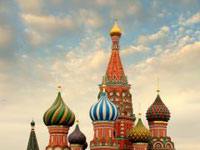Russia's Step Forward on Renewable Energy

By Toby Gati & Dmitry Ivanov - The Russian leadership has begun to task the Ministry of Energy and regional authorities with creating conditions for the greater use of renewable energy in electricity generation by Russian utility companies.
On January 8, 2009, Prime Minister Vladimir Putin signed an executive directive which calls for an increase in the energy efficiency of the Russian electric power sector on the basis of renewable energy sources. The directive sets several specific targets for expanding the share of renewable energy in electricity generation from less than the current 1 percent to 1.5 percent in 2010, 2.5 percent in 2015, and 4.5 percent by 2020.
Hydropower plants with a capacity of more than 25 megawatts (MW) are not included in these figures, but the targets do include small hydro power plants, as well as tidal, geothermal, wind, solar, and biomass sources, according to a RusHydro presentation in the fall of 2008.
For example, Russia’s wind-power capacity (estimated at 12 MW in 2005) is projected to increase tenfold to 120 MW in 2010, 1,500 MW in 2015, and 7,000 MW (or 7GW) by 2020. (For comparison, Canada’s installed wind energy capacity reached about 2.3 GW in 2008, supplying about 1 percent of the country’s electricity demand. United States wind energy capacity grew by 50 percent in 2008 to 25.1 GW.)

To meet the targets set in the directive, the Russian Ministry of Energy is tasked with taking a large number of measures, including deciding on pricing for electricity produced from renewables; attracting private investment for new and existing projects; engaging domestic industrial sectors and services; improving statistical reporting on the use of renewables in electricity generation; and raising public awareness about renewable energy sources.
The federal policy on the use of renewables in electricity generation through 2020 is, however, more than declarative. On the basis of the directive, the Ministry of Energy is to engage federal agencies and utilities and seek their input and cooperation in order to fulfill the tasks outlined in the directive. The directive should also spur regional governments “to make provisions in their development programs” for measures that foster the implementation of the new government policy.
Implications of the Directive
RusHydro, a Russian state-controlled company and the world’s second largest producer of hydro-based electricity after Canada’s Hydro-Quebec, already produces approximately 15 percent of the country’s electricity. The company has ambitious investment plans for new large and small hydro power projects and a vision for the development of the domestic wind power sector.
However, the company’s 2009 investment commitment (417 million rubles or about $13 million at the dollar exchange rate of 32 rubles) for small hydro, wind, and tidal power projects is conditional on the allocation of federal budget subsidies. RusHydro relies on legislative and executive support for the expanded use of renewable energy sources. If Putin’s directive is followed up with more executive orders (as RusHydro expects it will be in 2009), then this will in all likelihood influence domestic utilities and manufacturers.
There could also be greater use of renewables in future years if foreign and domestic investors in Russian utilities see cost-effective opportunities for generating additional income from renewables and remain committed to expanding the use of clean energy sources. Likewise, Russian industrial manufacturers will produce and supply equipment if there is growing demand for their services. Foreign suppliers of equipment and engineering services may come to see this as an area where partnerships and even joint ventures would be welcome.
Over the long-term, renewable energy initiatives can potentially create “green” jobs for blue collar workers and professionals. However, before this happens, legal and regulatory issues would have to be addressed.
Challenges to Implementation
The presidential directive cites numerous hurdles to the growth of electricity generation based on renewable energy sources, but also outlines comprehensive measures to address these concerns. If federal and regional authorities choose to cooperate with interested parties, domestic and/or foreign, more investment in small hydro, wind and solar power projects is likely to follow.
These projects will be limited by geographical factors, of course, and, to some extent, by competition for the attention of Russian authorities preoccupied with the present difficult financial and economic situation. Success stories of foreign companies engaged in renewable energy business can encourage more Russians to think “green,” not only in terms of how these projects impact the environment, but also in terms of potential profit-making opportunities.
This article was first published in the February 4, 2009 edition of ClimateIntel
For More Information: ClimateIntelYou can return to the main Market News page, or press the Back button on your browser.

